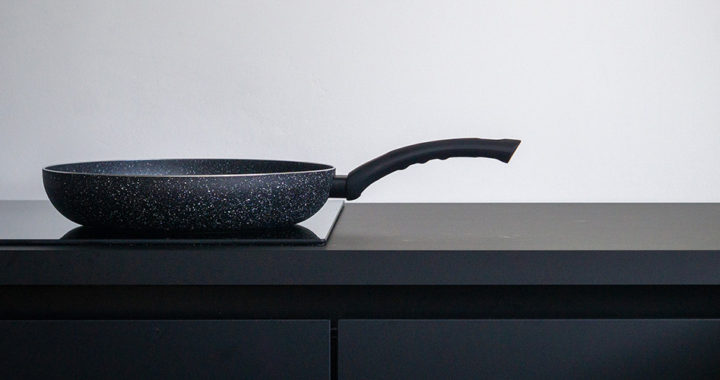Induction cooking is a method of cooking based on induction heating. More specifically, using electromagnetic induction to heat an electrically conducting object, it directly heats a cooking vessel. Note that gas burners and electric stoves are based on indirect heating, while convection ovens are based on convection and smaller ovens are based on thermal radiation.
The principle behind induction cooking and wireless charging is generally the same. More specifically, a typical induction stove has copper coils that become electromagnetic when applied with an electric current. Placing an electrically conductive and ferromagnetic metal on top of the stove would essentially make it an extension of the electromagnetic stove.
Electromagnetic induction involving the induction stove and induction cookware results in heat dissipation. The electrically conductive and ferromagnetic metal used in the cookware has a very high heat loss factor. The loss of heat is essentially the reason why the induction cookware becomes hot. Furthermore, the entire process transpires quickly.
Pros: Advantages and Benefits of Induction Cooking
With prices of induction stoves and induction cookware going down in recent years, cooking via induction method is gradually replacing the use of gas burners and traditional electric stoves in residential and commercial settings due to its advantages and benefits.
The following are the specific advantages:
1. Faster and Consistent Heating: Better thermal efficiency is a key advantage of induction cooking over indirect heating methods that translates further to faster hating and even distribution of heat across the pan. Hence, it is ideal for cooking sauces, preheating a food or melting a substance, reheating refrigerated food, and slow cooking.
2. Energy Efficiency and Control: It is more energy-efficient than traditional electric stoves. Heat is directly transferred to the cookware, and as such, there is less energy loss than electric stove and gas burners, which use only about 65 to 70 percent of the energy they consume while in operation. Furthermore, similar to gas ranges, the intensity of heat can be controlled more directly and instantly.
3. Less Risks from Burn Injuries: Only the surface of the cookware gets heated, and it does not usually reach a hazardous temperature. The stovetop also remains cool. Both the cookware and stove become cool within minutes of inoperability. Hence, the risk of injuries from burns due to accidental touches is significantly less than cooking methods using gas burners, electric stoves, and ovens.
4. Easier to Clean and More Compact: An induction cookware is easier to clean because it has a flat and smoother surface, unlike traditional pans and pots used for gas burners and electric stoves. Furthermore, an induction stove is less bulky than a gas range and considerably slimmer than an electric stove.
5. It Can Be Environmentally Friendly: Because it depends on electricity, induction cooking reduces the use of fossil fuels and the emissions that come from burning one. Note that this is especially true in areas the harness or integrates a sizeable portion of renewable energy in their energy mix. In addition, compared to using gas burners, cooking via induction does not generate indoor air pollution.
Cons: Disadvantages and Limitations of Induction Cooking
Despite the advantages and benefits mentioned and detailed above, induction cooking is not for everyone. It has several drawbacks and limitations that make gas burners and ovens more ideal in several use-case situations.
Below are the disadvantages and limitations:
1. Induction Setup is Still Expensive: When compared to gas burners and electric stoves with similar size and cooking capacity, induction stove is still expensive. Furthermore, an induction stove needs specialized or compatible cookware made of ferrous metal. Switching from gas burners and electric stoves would require purchasing new pans and pots. Glass and aluminum cookware will not work.
2. There is a Learning Curve: Another notable disadvantage of induction cooking is that the overall cooking experience is different from cooking using a gas burner or an electric stove. Remember that heating is faster using this method. Thus, it would require some time to become accustomed to controlling the head and reduced cooking time.
3. Unsuitable with Other Cooking Techniques: Different cooking methods cater to different cooking techniques. There are food preparation methods dependent only on grillers and ovens. Some cooking techniques depend on the flames in gas burners or specialized cookware such as clay pots.
4. It Can Be Noisy while in Operation: Induction stoves make noise due to the internal cooling fan. Furthermore, some pots and pans generate an audible acoustic sound similar to a buzz or a high-pitched hum when used at high power. Cookware with loose parts can also produce sounds coming from minuscule vibrations.
5. Not Always Energy Efficient: Remember that an induction stove is more energy-efficient than a gas burner or electric stove. However, this may not be the case always. There are areas where purchasing a tank of liquified petroleum or natural gas is cheaper than using electricity. In addition, gas burners might be cost-efficient in commercial settings.
6. Concerns Over Medical Implants: The medical literature notes that proximity to induction stove remains safe for individuals using pacemakers and medical implants that could be affected by magnetic fields. However, they are still recommended to check first with their physicians and the providers of their implants.





